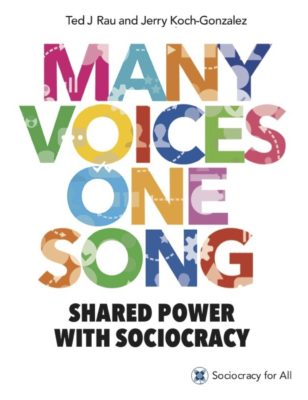To be a sociocracy, in the same sense that a democracy is a democracy, the principles and methods would have to be adapted to local and national governance. A sociocratic structure would be a radical departure from the way democratic governments are structured today. It might emerge more easily in a country that is just emerging from an autocracy because it could emanate from a single point rather than having to unify several conflicting governance structures as we have in the United States.
In the United States government, policy decisions and the implementation of those decisions are delegated to completely different sets of people: the legislative branch and the executive branch. There is no overlap. (They often are not even on speaking terms.) This produces a system in which an executive unit can inform (and beseech) the legislative unit to set certain policies, but has no control over whether it does so. The legislative units can set policy but can also be thwarted by executive units that fail to implement them or choose to implement them using an interpretation contrary to the aim of the policy.
This necessitates a third unit, the judicial branch, to decide which unit is right. Their basis for settling conflicts is to look the constitution, policies, and previous judicial decisions. The resulting deliberations and arguments can take many years. They are expected to be impartial
In addition to being in units that can easily obstruct the work of another unit, all or most of the leaders in the United States government are elected by, appointed by, or deeply affiliated with political parties. Since there are effectively only two political parties, Democratic and Republican, this results in a polarity. While party leaders may nominally be elected government officials, the powerful party decision-makers are most likely to be people with money or with professional credentials, like campaign managers. Thus the people who determine, directly or indirectly, who is elected or appointed are not necessarily even a part of the government.
The branches of government are in conflict by definition. They are designed to oversee and regulate each other, not to work together toward common aims. Further conflicts are produced by political party affiliation, each with their own aims, creating divisions with the branches. With no common aim, there is no ability to judge success — and no ability to be successful. The battles are big and the accomplishments small. Not only small, but subject to being overruled by another branch of the government, if not this year, the next. And each leader is subject to being deposed not because of poor service to the government, but to poor service to the party.
In sociocratic organizationsThe Delibrative Democracy Consortium (DDC)u is an alliance o..., governance, making policy decisions, and operations, implementing those decisions, are not separate in theory or practice. Both functions are carried out by the same people. With the legislative and the executive functions joined, the judicial function of settling disputes between them becomes irrelevant.
Each government unit would combine the functions now performed by committees in the House and Senate and by agencies in the executive branch. Policy and practice would inform each other and share a common aim. It would be self-defeating to write ineffective policies or to purposely ignore policies. Policies would be written within defined domains so pork-barrel additions unrelated to the work of the unit would be impossible.
Government officials would be elected by the government agencies in which they would serve, making political parties irrelevant.
Questions: Where is the guiding hierarchy? Who serves the function of a (good) corporate board? How do the states link to the federal government?
Categories: Leadership and Self-Organization

